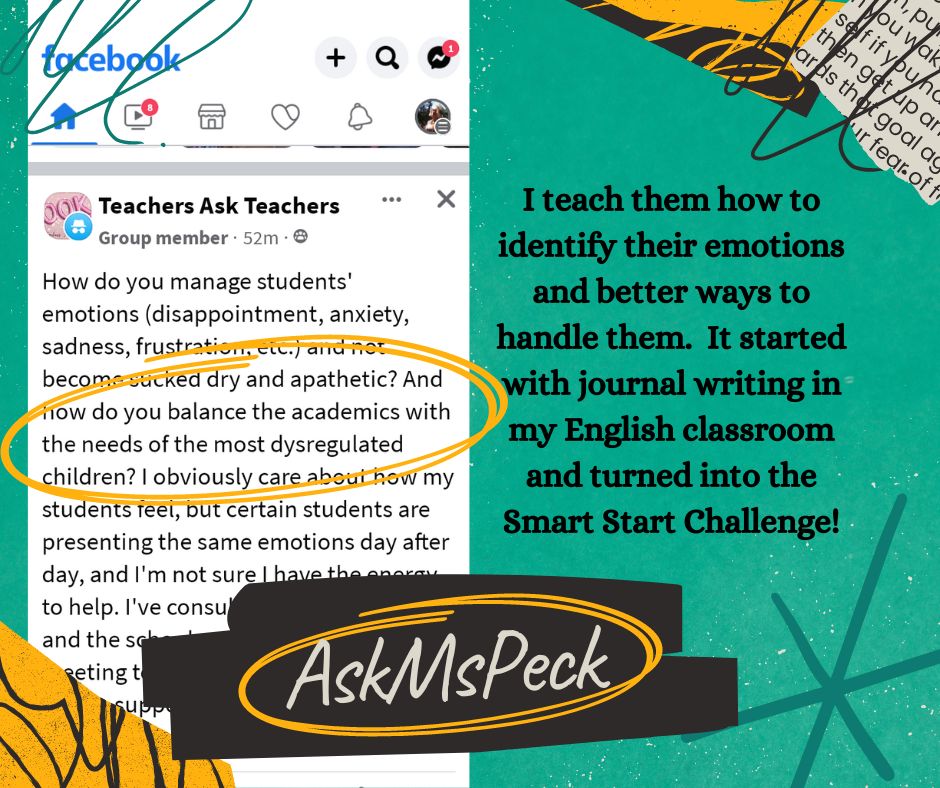It sounds funny but I have seen a lot after teaching over 1,500 students. Working with them 5 days a week for 180 days creates a level of “teenager expertise” after so many years in the classroom. But my perspective as a high school teacher is really based on my combined experiences as a teacher and parent, and is influenced by my background in business, which has led me to becoming an author and life coaching for teens.
The “professionalism of teaching” means there is a line between school and “private” lives, and the fact that kids go home to their parents. This is sometimes a frustrating thin line for me to walk because my “mom gene” kicks in with some of my students. Yes of course, I respect parents and their right to raise their child. However, I have known many students whose struggle is parent-related, and it is my professional obligation to report improper things to admin or child services.
By the time students get to high school, their family dynamic is either going to push them to graduation, or not. The slope can get slippery and things can start to go downhill for the already struggling student. During 9th grade, students’ hormones and imaginations kick into overdrive and those without support or guidance often go astray.
I know destructive mental health is something that needs to be addressed and not ignored. As a mom I often wonder what I would do if this were my son or daughter with potentially dangerous trauma signs. When my teen tried to hide pain and suffering of bullying with negative behaviors, I created a giant spectacle of accountability and took massive action.
We must avoid mental crisis situations by recognizing the early signs and acting.
In schools, teachers are the front line seeing students and yet most do not cross the personal boundary to intervene. My co-teachers have expressed disgust at the idea of teaching a “mental health” class because it is not their “content area”. Everyone has comfort zones but I feel, sometimes you have to push past them.
Guidance counselors and social workers are part of a school’s “safety net” for students. Behavior specialists and ESE support staff are also part of this net but many were eliminated with budget cuts. Over the years the workloads are doubled and resources pushed to the limit. Food services is another area of cuts when food scarcity is a reality for many households.
For the parents who recognize the signs and have the ability to act on the situation, it takes a physician to make an official diagnosis of a mental illness. The first criteria being the teen has experienced 2+ weeks of ongoing pain or suffering.
Additionally, five out of following seven symptoms are required for diagnosis:
- changes in sleep
- new onset of guilt
- changes in energy level
- changes in concentration or task completion
- changes in appetite
- changes in motivation
- thoughts of suicide
IF students are lucky enough to have parents that get them to a physician, the criteria of presenting with 5 of the 7 is high and many teens will dodge every question asked. It also takes time to work through the healthcare process from counseling to medication treatments. Many students are not fortunate enough to make it to the first doctor’s appointment.
In the meantime, the clock is ticking on those 180 days. I bet most teachers can spot the kids facing challenges within the first month. Easily by the first grading period, contact with parents was made and a good sense of the situation is at hand. By November that safety net should be fully engaged and interacting with every student below grade level.
Unfortunately, it isn’t. Too many teens are falling through the cracks!!
For me, these are my favorite students. They’re the ones who are often absent or have strange excuses for things. Many have been taking care of younger siblings or themselves, and feel defensive or are extremely private. Some are angry and mean while others shut down sleeping in class within minutes of the bell ringing. This ongoing behavior makes my mom-gene kick in.
I take a direct approach with students and ask them to explain their situation. Believe me I am open and up front with expectations in my classroom. Honesty is the only policy. It takes a while to develop a relationship but eventually they open up.
My point is that we need to really dig in and get to this solution with our 14-15-16 year olds. The transition from middle school to high school is a significant one. The statistics are not favorable for those entering 9th grade already behind on credits and grade point. Before COVID it was 20% of Freshmen will not be graduating on time in 2024, and 5,000 students are dropping out of high school daily.
The reason why I chose this demographic is because of the tipping point. If mental health is not addressed in the early stages, it progresses downhill. Smoking pot can turn into auto theft. Childhood anxiety can become schizophrenia without treatment. Bullying and PTSD can lead to suicides or mass shootings by teenagers. It has to be addressed or it gets worse.
We can only imagine the impact of COVID on these struggling students and need to anticipate it escalating in many service areas. The idea of students being “at-risk’ is outdated because they have already been traumatized and need rehabilitative care. They were “at-risk” in kindergarten, this is 10 years later. Trauma informed teaching is just beginning as a practice and needs to become more widespread, especially in secondary grades.
My Smart Start Challenge was designed to reach students who are experiencing these symptoms and need a helping hand. The idea is to offer a new way of approaching life with someone who can teach critical skills. I know resilience in students is weak and service learning works to create those positive outcomes.
They could be repeating 8th grade or really hating 10th grade, my point is to address the problems early. Too many students are struggling and need to learn how to move forward. Personal growth and motivation for learning work together. At this age, students need the guidance and practice to strengthen a growth mindset and focus on a positive future. When I empower them with a significant task and listen to them, they transform and start to believe in themselves.
We have a solution and need to use it before the existing problem grows into a larger mental health crisis. The Smart Start Challenge content is research and standards based. The Co-Teacher Guide makes it easy for any teacher or youth group leader to host the event. It is a turn-key tool for every adult who has the heart to help our students. Here’s the link for the bulk package for teachers to host the event!
Ask Ms. Peck is offering group coaching beginning Wednesday, March 1st at 7:00pm EST. The weekly Homeroom for Success is an hour long virtual event meeting again on March 8, 15, 22 and 29, 2023. Get tickets and download the Smart Start Challenge Handbook today!
Ask Ms. Peck is a member of the Writers Society, the Smart Start Challenge was published in November 2021.



